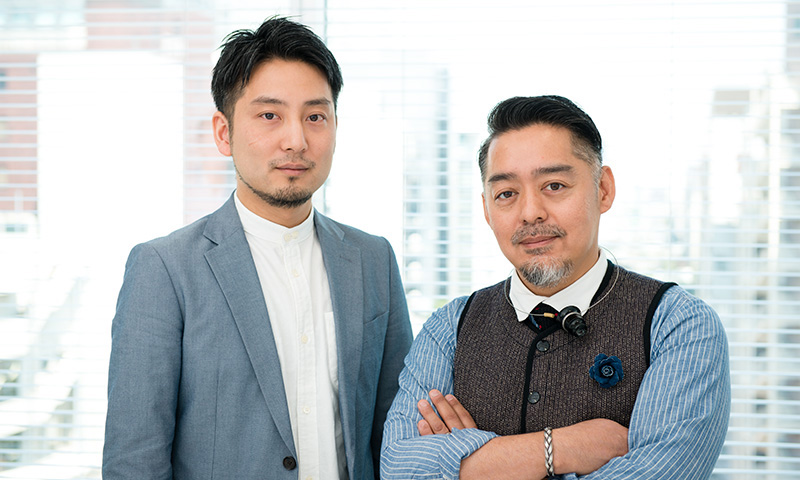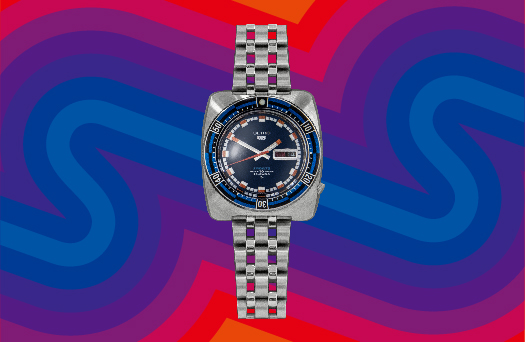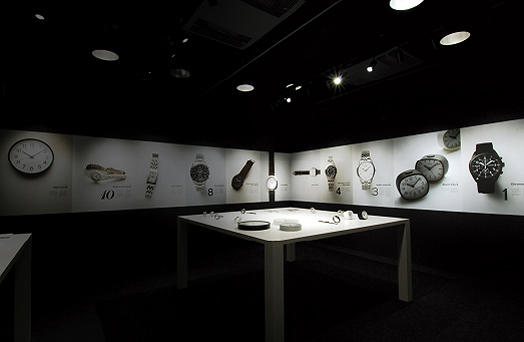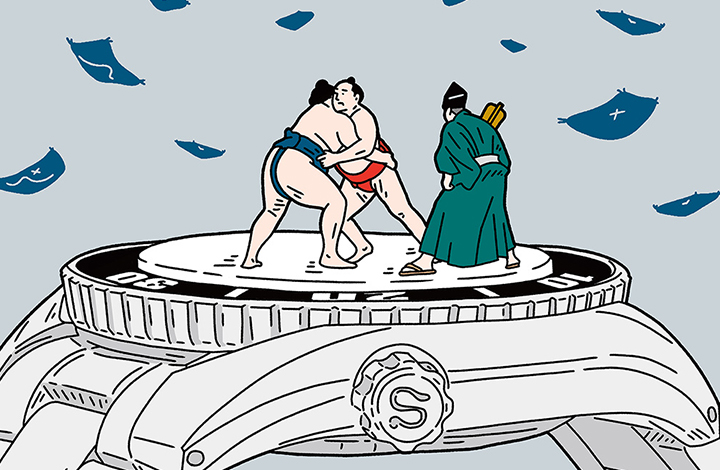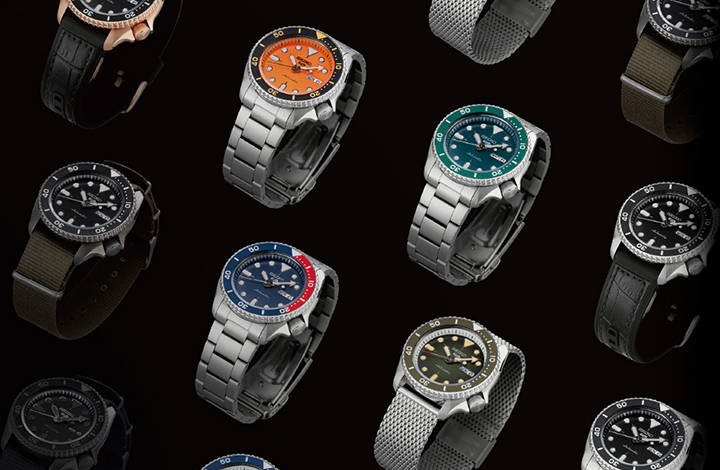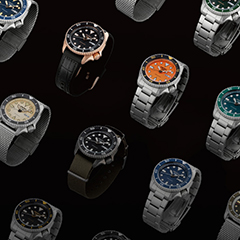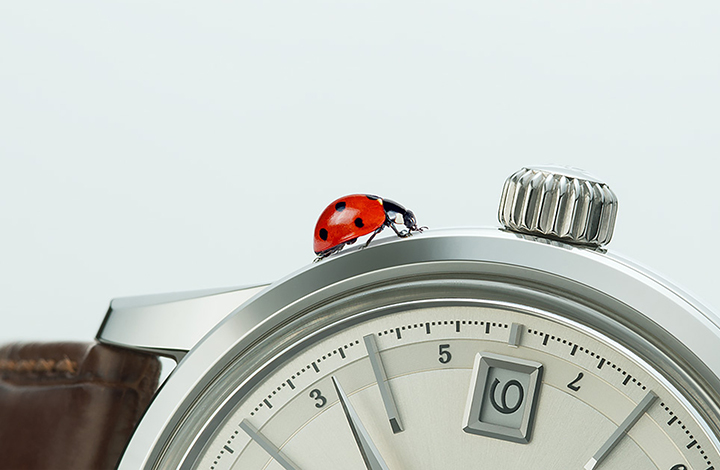Taking a closer look at the product from the designer’s perspective.
— About each of the watches. Additional thoughts from the designers’ points of view.
Monjugawa: The diver’s watch with the outer case protector that is nicknamed the Tuna Can has an extremely simple shape. If you asked a child to draw a picture of a watch, they would draw a band with a round circle on it, right? In other words, they have the impression of this being the iconic shape of a watch.
Koshino: For many of the male designers who have joined Seiko this is the kind of watch they want first of all. Actually, I, too, looked at the watch my superior was wearing, fell in love with it and went out right away and got one for myself. To me it was unsophisticated and simply super cool. Things like tools or devices appeal to the male instinct.

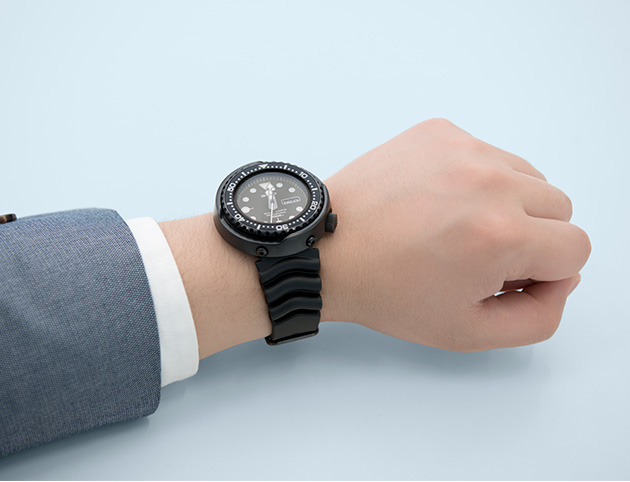
Monjugawa: The jagged bezel of this model called the Monster, is both design and function. Of course, whether or not the bezel turns easily is important, but whether it “appears” like it would be easy to turn is also important. If you “think” it looks easy to turn while actually trying to turn it, your brain will decide that it really is easy to turn. This is how we designers think when we design things. For the watches with nicknames this kind of design approach has been applied. There are now many products coming onto the market that might well be called derivations of these watches.
Kishino: The design in diver’s watches with an outer case protector that originated with the Seiko 600-meter diver’s watch still continues to this day. In keeping with the times the materials and the construction have changed slightly, but nothing fundamental. The model referred to as the Monster has many derivations. And there are various nicknames for these well-liked derivations, such as the Orange Monster and the Frankenstein Monster.
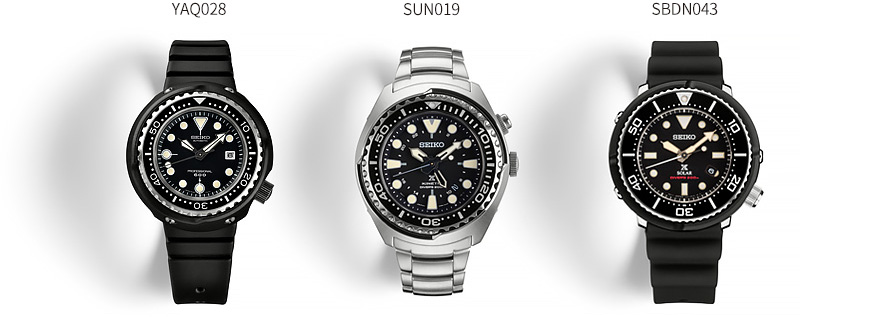

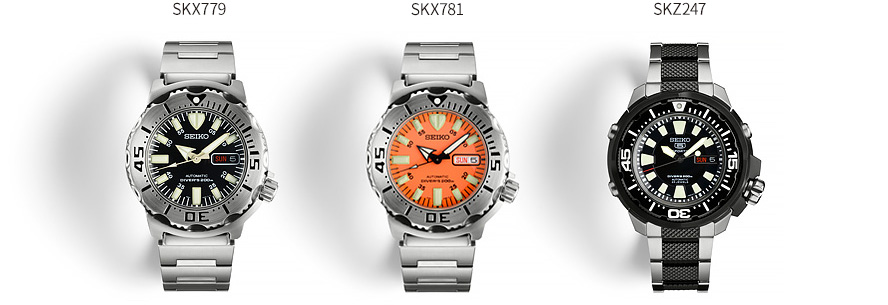
* Note: All names in quotation marks are nicknames only and not actual product names.

*Note: All names in quotation marks are nicknames only and not actual product names.
Monjugawa: Among the watches I was personally in charge of designing, there is one called the “Baby Tuna.” The details of the dial and bezel are based on the model called the Monster but the outer surface is wrapped in a bulky casing. In plain words, it’s like crossbred half of each of two different watches with two different nicknames. I designed it wanting to retain the good points of each. This design proved to be very popular.
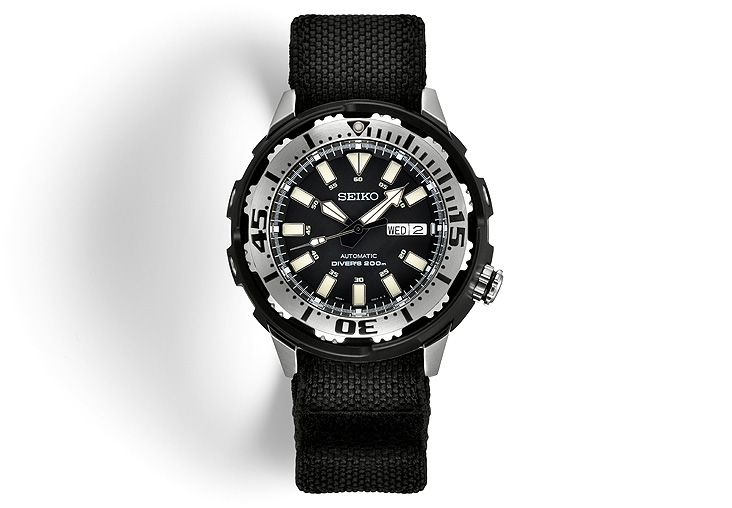

The uniqueness of the design creates a stronger affinity with the user.
Monjugawa: Among the Seiko watches with nicknames there are many diver’s watches. I believe this is because they are sturdily built and almost never break. Because the relationship with the wearer is a long one, the watch becomes like a life partner. I think that’s why it’s so easy to have a nickname.
Koshino: Designers don’t think of creating a watch with a specific name they happen to like, but if the watch they design ends up having a nickname that makes them happy. For people, too, nicknames are often given to those with some kind of special characteristic. It’s hard to come up with nicknames for those lacking in individuality. And furthermore, being given a nickname is a sign of acceptance of that individuality.
Monjugawa: Putting aside the matter of whether a watch ends up with a nickname or not, I want to create lovable designs with distinct personalities so that just being near the user will bring a new level of interest and excitement.
